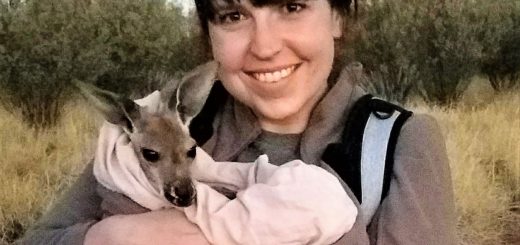The Wisdom of Biomimicry in Learning Space Design

This guest post by Robert Dillon, who recently presented at Transitions North America, asks Does nature know the answers surrounding how we should design spaces? Is nature, even in its most violent moments, speaking to us about how we should design spaces for learning?
Every step we take in nature holds clues to the types of learning habitats that can support the learning habits that we desire for students. Consider some of these ideas and questions about how biomimicry (the answers that nature provides us) can impact our thinking and design of innovative learning environments.
Many artists have spent their career exploring biomimicry. From Georgia O’Keefe’s communing in New Mexico with the essential aspects her surroundings to the amazing work of Andy Goldsworthy, who brings us sculptures that are baked in the wisdom of his surroundings, these artists and others felt that nature could bring inspiration and answers. How can we also learn like the artists and scientists before us that have explored the nature’s spaces for answers?
Dr. David Thornburg’s work around promoting communication and a sense of community in classrooms can help us see the power of biomimicry. His work explores the idea of a campfire being a gathering place, the water hole filling us with ideas and conversation. He also looked at the importance of the cave and quiet space and the idea that a space needs to feel alive and energizes us. All of these metaphors are baked in concepts of biomimicry.
Learning spaces need time to breathe just as nature allows its ecosystems the space that they need to reshape themselves into healthy places. Learning space also need time for the mental models of its past to fade and the possibility of what could be surface.
We can also look for solutions and ideas from nature in the following ways.
Erosion is nature’s way of letting us know that gravity is strong. Where are the nature places where gravity impacts our learning spaces? Does this support learning or inhibit it?
The flow of the river is powerful, and the ancient saying that you can’t step in the same river twice pushes us to believe that agility and flexibility are cornerstones of a great space.
Sunsets are moments that allow for connection, reflection, and a knowledge that we are part of something bigger. These are all traits that we want in our modern learners.
The nest is a powerful metaphor in learning. How can we support and nurture while preparing our students to fly. We want our spaces to be a huge part of this process.
We can consider the power of the waterfall, and how it is noisy with purpose. It is also a place where you can feel nature’s power, and we want our classrooms be places where you can feel that same power.
Finally, we consider the fire. Beyond the campfire, the fire needs oxygen and fuel, both things that our classrooms need along with the spark of an amazing teacher.

Does nature have all of the answers? It is doubtful, but if we take time to notice the wisdom of nature, then as scholars, teachers, leaders, and students, we can build the solutions needed to help all students love learning, feel whole, and know that their ideas and voice matter.
Dr. Robert Dillon, Director of Innovative Learning. School District of University City



